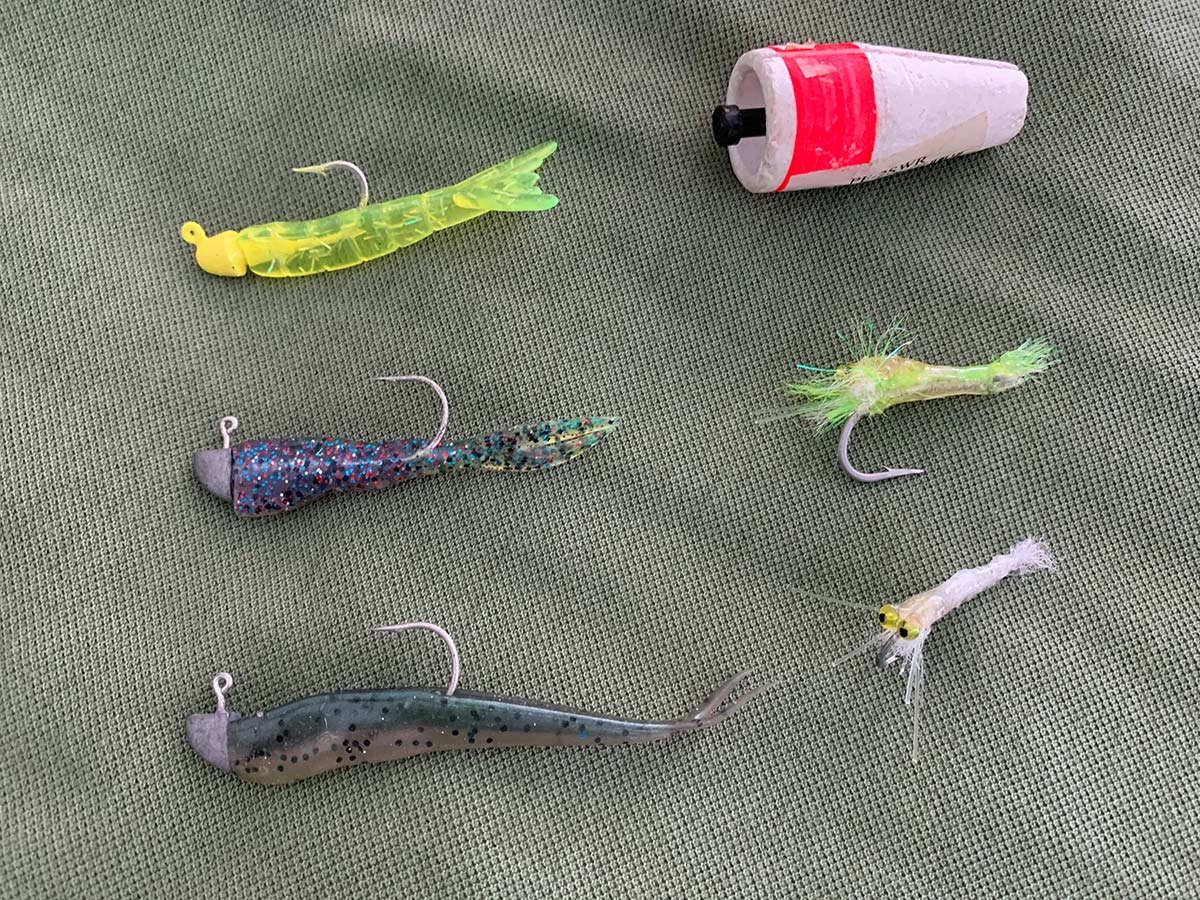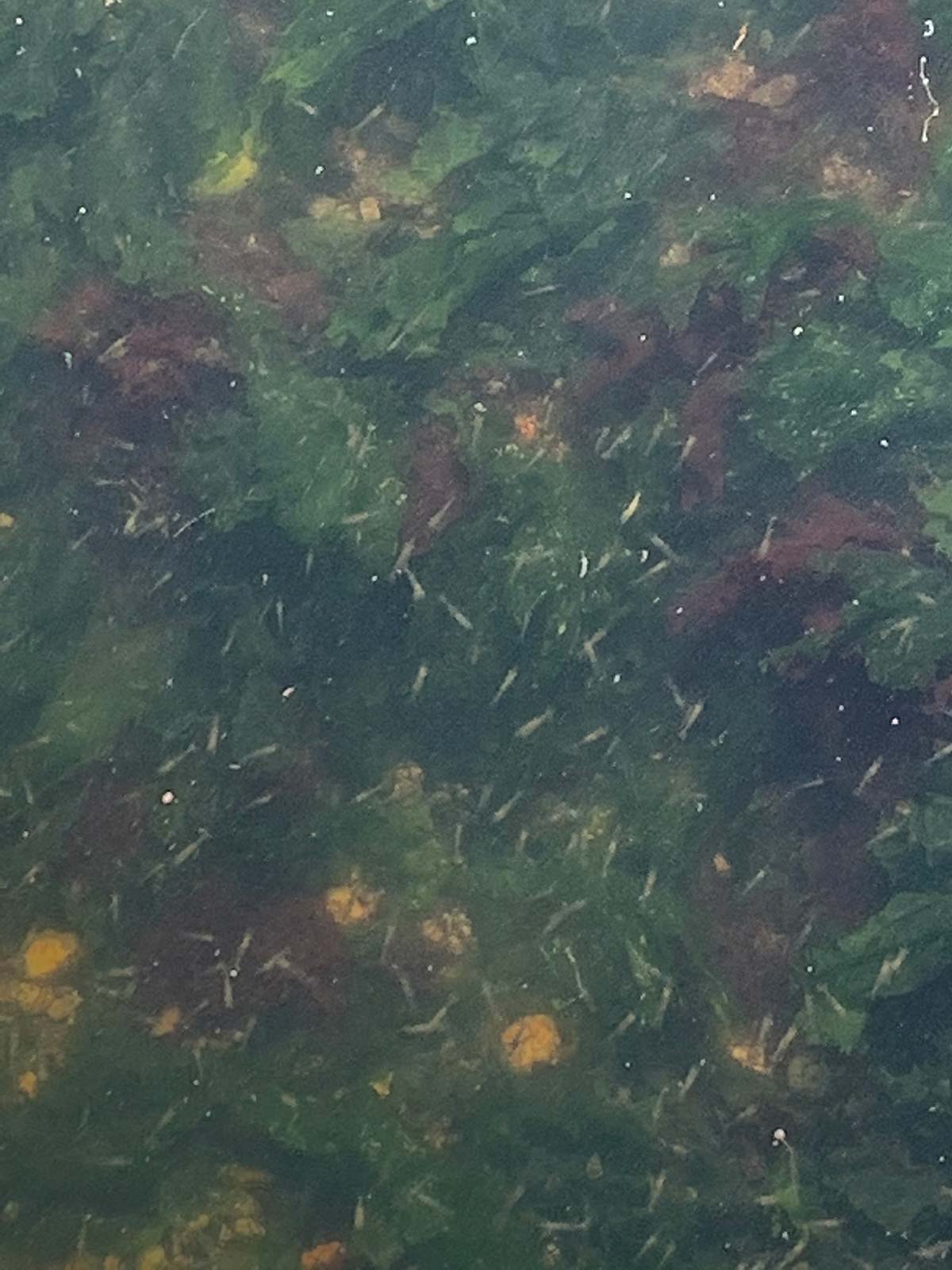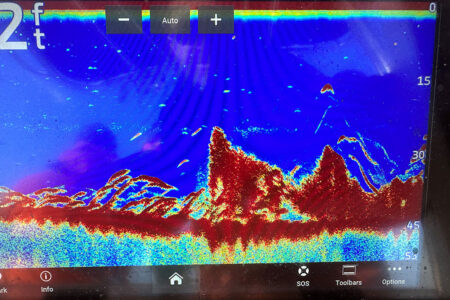
Grass shrimp are readily available forage for striped bass the year-round.
Peering over the side of the bridge on Main Street you could see the shapes of several stripers slowly gliding back and forth in the current. Looking closer you could see them with wide open mouths as they shifted their positions in the flowing water.
Along with the stripers were hundreds of small little shapes that were barely visible. These little shapes were moving along with the tide but occasionally made jerky movements and even leapt from the water like bugs. Occasionally a striper would rise to engulf some and tail smack the surface with a splash.
These little ‘bugs’ were nothing other than grass shrimp that were being flushed by the tide from the small estuary behind the bridge. The stripers were setting up their feeding station to let the current bring them their food, just like a conveyor belt. This scenario takes place all along the Striper Coast and can be taken advantage of both by fishermen from shore and by boat.
Where & When
Grass shrimp live and feed among the grass, seaweed, and salt marshes. Look for the outflows from these back estuaries and ponds. Specifically focus on areas that are narrow or have a constricted flow that forces a bunch of this bait together when the tide empties the estuary. Even the most unlikely of these areas may provide shrimp buffets when other feed options are not available to stripers.
Since grass shrimp are here year-round, they are a primary bait when other sources are not readily available. Early spring, before the worm hatches, is prime time but there are several other windows throughout the year when other baits are not as plentiful. Again, look for an ebbing tide (out flowing) when looking to find stripers feeding in this manner. The tide is the delivery force.
Cloudy, low-light, and /or rainy conditions tend to offer the best success – no doubt because these fish are feeding in such shallow water and the darker conditions cut down on the visual acuity.

How & What
The approach to these feeding bass is to get your bait uptide of them and allow it to flow back to them with the current. Because this is often taking place in fairly shallow water, light tackle and leaders (if any) are usually necessary. Remember that grass shrimp are almost translucent, so lots of hardware like swivels attached to heavy leader could stand out to the bass when they are keyed in on these baits. I like either a spinning rod with 8- to 12-pound test or a fly rod. If I use a leader it’s going to be fluorocarbon and only 15- to 20-pound test.
There are several baits that you can use to catch during these periods; keep in mind that often when gamefish are keyed on these specific baits in this shallow water, that might be all they’re looking for. There are several soft plastic shrimp style baits that work well as grass shrimp impersonations, including H&H TKO Shrimp, Almost Alive, Zman, Storm, and DOA. Other Polyvinyl Chloride (PVC) baits will also work. I’ve found that smaller Fin-S fish (rainbow trout color) can also be effective at times.
Shrimp fly patterns also work well and often drift very nicely in the tide. I periodically tie a few flies of my own, but EP Grass Shrimp, Enrico’s Grass Shrimp, and Halo Glass Shrimp are some of the popular patterns. The key to any of these baits is getting the weight just right so that they neither float nor sink immediately to the bottom. You want them to be able to flow with the current, ideally mid-depth. When tying my own flies I’ll add just a bit of lead wire to the fly to help it sink just a bit. If you find it sinks too much, add a small float to your line to prevent it from sinking too much.
While being in the backs of estuaries you’re most likely to find school sized bass using this method but don’t be surprised if you sometimes find some much larger fish mixed in, as well as other species like weakfish and fluke.




